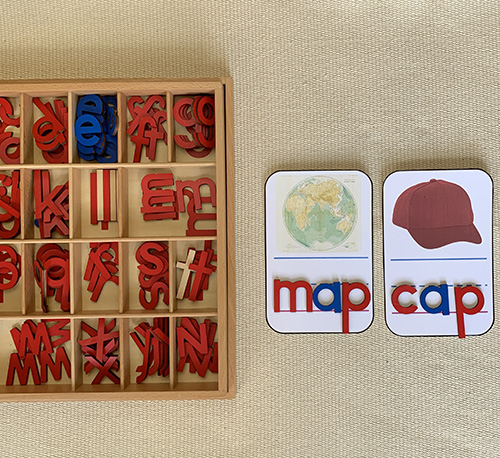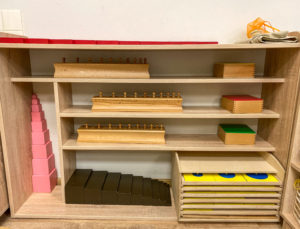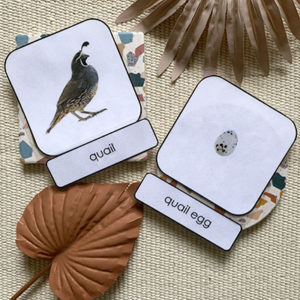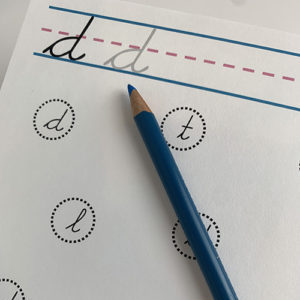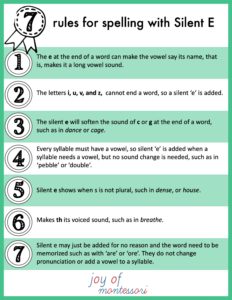As a teacher it is easy to take for granted some of the jargon we use. For example, when I say “CVC Words” to a parent, they may be puzzled. CVC words are three letter words, with a consonant-vowel-consonant pattern. Examples of CVC words include cat, dog, fan, and tap.
Why are CVC Words Useful?
CVC words are useful because they are short and simple. This makes them easier for children to read and spell. There are many CVC words (188 of them can be found in my CVC Words List resource).
In Montessori, we spend a lot of time on phonological awareness (teaching the sounds the letters make as opposed to the names of the letters). When a child is ready to spell, we use CVC words, and often begin with word families. Word families are CVC words grouped by their two ending letters. For example, the -at word family contains words like mat, bat, hat, cat, sat. Spelling is also called encoding: the process of hearing a word, identifying their individual sounds in order, then matching the sounds to the letter symbol.
CVC words are also easy to read, which is called decoding. Decoding is essentially the reverse process of encoding: looking at each letter in succession, saying each letter sound, and blending them together to identify the word.
Given that CVC words only require a child to encode or decode three sounds, they are considered the best starting point for phonics and spelling instruction.
How to use CVC Word lists and Word Families
- Introduce one word family at a time: begin with one word. If the child grasps the concept, continue with 2-3 more words from one word family such as the -at family. Using my CVC Word Lists, you could highlight words from the -at family, such as cat, hat, mat, sat, as the child spells them for record keeping.
- Practice decoding (reading) and spelling (encoding): Once children are familiar with the word family, practice reading and spelling the words for several sessions over several days. Always monitor the children for signs of fatigue or frustration.
- Create word family activities: play rhyming games, sing songs with CVC words, print duplicates of words to play memory and matching games, or match flashcards or images to moveable alphabet letters.
- Don’t rush to make children write: The beauty of the moveable alphabet is that it separates the cognitive skill of learning to spell from the fine motor skill of learning to write. For many children, learning to spell while simultaneously writing the letter forms is too difficult and can lead to frustration. Some children like to have a physical booklet or list of their new words to take home. Give children the option to write, but don’t make it a requirement.
Note: if a child does not seem to grasp the concepts of encoding or decoding, just go back to basic phonemic awareness skills and games.
CVC words aid in early literacy development. CVC words pave the way for more advanced reading skills that the children will learn over time.

